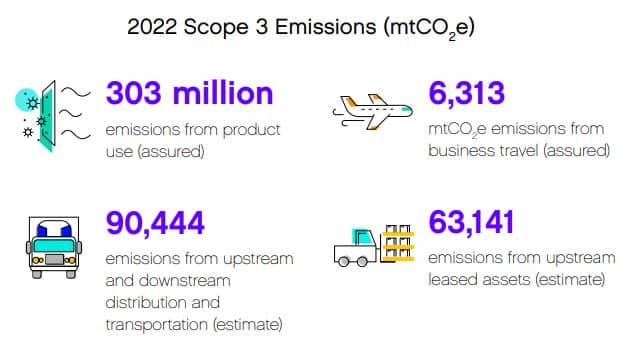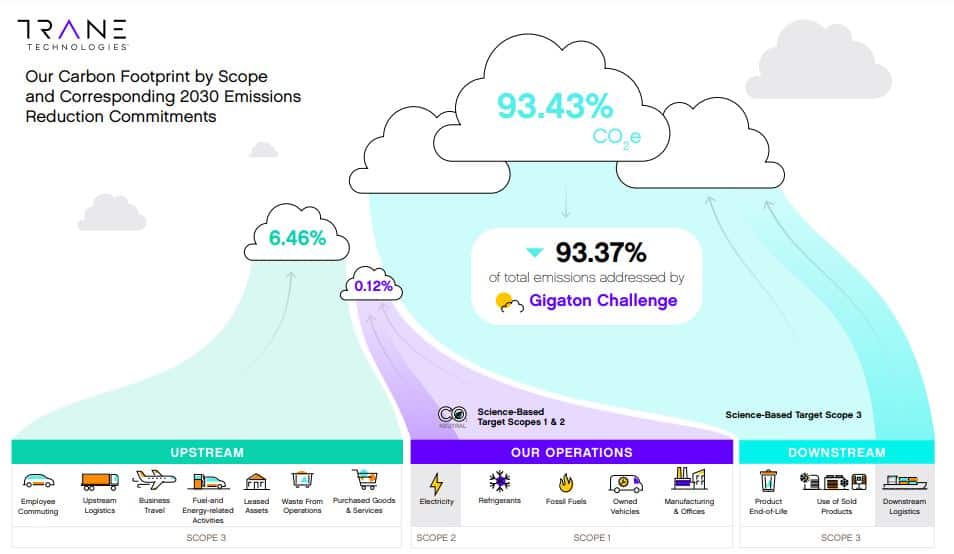Trane Technologies launched its new AI and cloud-based tool that seeks to help building owners and facility managers reduce energy consumption and hasten decarbonization efforts.
Trane Technologies is a global climate innovator that offers efficient and sustainable climate solutions to buildings, homes, and transportation. Its new offering, Trane Autonomous Control Powered by BrainBox AI, uses artificial intelligence to automatically identify and implement optimization actions.
Slashing Building’s Carbon Emissions
The new AI-powered tool is an HVAC optimization solution that connects to existing climate control systems. It sends real-time, optimized control commands that help lower energy use and minimize carbon emissions.
The new technology also features predictive weather data and occupancy trends, improving overall building performance and sustainability.
Buildings are a significant contributor to carbon emissions, representing 15% of global emissions while accounting for about 40% of global energy-related emissions. In the United States, they account for over 30% of all greenhouse gas emissions.
Not to mention that they’re one of the hardest emission sources to replace, simply due to their nature.
According to the Energy Information Administration (EIA), there are around 6 million buildings in the U.S., not including residential. In Canada, there are 500,000 buildings to take into account.
By contributing significantly to carbon pollution, buildings become a prime target for emission reductions, including Trane Technologies.
Donny Simmons at Trane Technologies emphasized the importance of their new offering, saying:
“… the demand for more sustainable building solutions grows each day. Leveraging innovative AI-enabled solutions is one of many ways we are helping customers dramatically reduce their carbon footprints, while meeting business goals and doing the right thing for the planet.”
The company said that it tested the Autonomous Control in multiple sites with a client in the U.S. The results show significant energy performance improvements and substantial CO2 emissions reductions of over 30% across 100+ facilities.
Back In 2019, Trane launched the Gigaton Challenge with the aim to reduce 1 billion metric tons of CO2 from its customers’ footprint by 2030. The company said that the new AI-powered tool will support its Gigaton Challenge as well as its sustainability targets.
Trane Technologies Net Zero Targets
The company committed to reaching net zero emissions by 2050, or a 90% reduction in emissions across its entire operations.
Trane Technologies Net Zero Roadmap

Scope 3 – product use and supply chain – represents the vast majority of the company’s total carbon emissions. To address this, Trane pledges to reduce Scope 3 emissions by 55% per cooling ton vs. 2019 baseline by 2030. This target increases to 97% by 2050.

The company has been employing various measures to reach its 2050 net zero targets. And focusing on its Gigaton Challenge is the key to it.

The technology developer, BrainBox AI, said that it’s expanding the AI tool for commercial real estate to multi-site retail portfolios. The AI firm was also awarded by Canada’s largest financier of sustainable (SMEs) businesses, Sustainable Development Technology Canada, with over $6 million.
In summary, Trane Technologies’ new AI and cloud-based tool is designed to enhance energy efficiency, reduce carbon emissions, and contribute to the company’s sustainability and net zero targets. If more companies in the sector follow the same path, the world will be much closer to decarbonizing buildings and other built environments.

